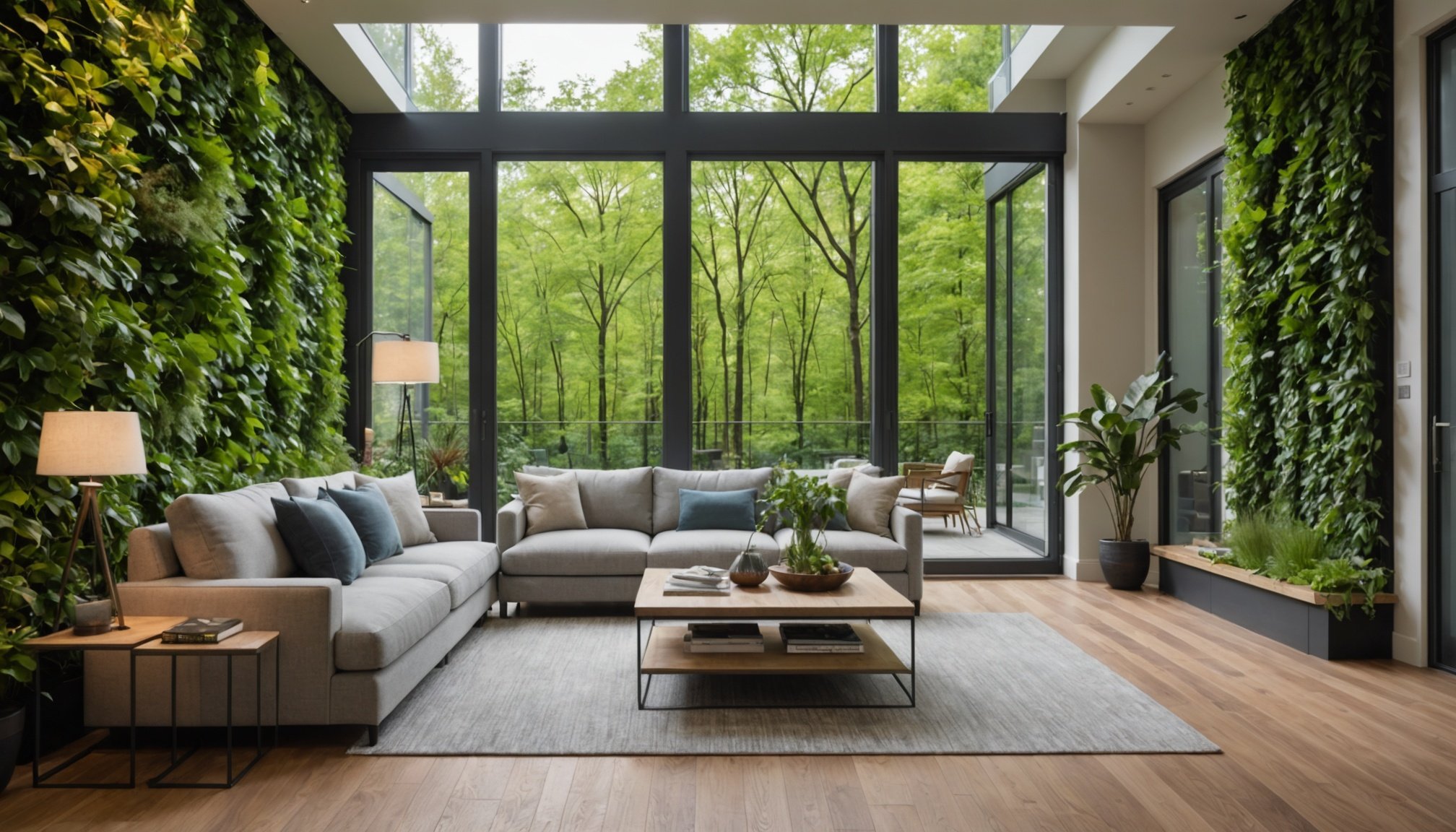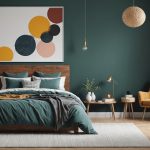Biophilic design is a concept that connects nature with the built environment. By incorporating natural elements into our living spaces, we can create an environment that promotes well-being and enhances our quality of life. This article delves into the numerous benefits of adopting biophilic design in your home, including its impact on health, stress reduction, and overall living experience. Whether you are renovating or designing a new home, understanding these benefits can help you shape a space that nurtures a deeper connection with nature and improves your daily life.
Understanding Biophilic Design
Before diving into the benefits, it’s crucial to understand what biophilic design entails. At its core, biophilic design emphasizes the inclusion of natural elements in our built environments. This includes the use of plants, natural light, and organic materials that echo the patterns and textures found in nature. The term itself, biophilia, refers to the innate human affinity for the natural world, suggesting that our physical and psychological well-being is closely tied to our surroundings.
Also to read : What are the essential elements of a cozy UK bedroom design?
Incorporating biophilic elements into home interiors allows for a more harmonious living space. You can create a soothing atmosphere by utilizing natural light to illuminate your rooms, which has been shown to enhance mood and productivity. Similarly, integrating patterns that mimic natural forms, such as wave-like designs or leaf motifs, can evoke a sense of calm and familiarity.
Moreover, the strategic placement of plants not only beautifies your home but also improves air quality, providing a healthier space to live in. This connection to the outdoor environment fosters a sense of tranquility, encouraging you to feel more grounded and relaxed in your daily life. By understanding these fundamental aspects of biophilic design, you can begin to appreciate the profound influence it can have on your home and, consequently, your well-being.
In parallel : How can I effectively mix vintage and modern decor styles?
Enhancing Well-Being and Health
One of the most significant benefits of biophilic design is its positive impact on health and overall well-being. A multitude of studies confirms that exposure to natural elements can reduce stress and improve mental health. In modern society, where urban living often disconnects us from nature, bringing these elements indoors can be a transformative experience.
The presence of plants in your home plays a crucial role in this context. They not only purify the air but also contribute to a calming atmosphere. Research indicates that having plants in indoor spaces reduces feelings of anxiety and boosts mood. This is particularly beneficial in home offices or study areas, where mental clarity and focus are essential.
In addition to plants, the incorporation of natural light can significantly enhance your well-being. Sunlight is a natural mood enhancer, helping to regulate circadian rhythms and improve sleep quality. By designing spaces that maximize light exposure, you contribute to a more stable and positive emotional state.
Furthermore, using natural materials like wood, stone, or bamboo can create a more inviting and comforting environment. These materials not only add aesthetic value but also help to create a sensory experience that resonates with your body and mind. The combination of these elements leads to a home that supports your health, illustrating the profound connection between your living space and your overall state of being.
Reducing Stress and Anxiety
Stress has become a common element of modern life, and the environments we inhabit can exacerbate this issue. Biophilic design offers a powerful antidote by fostering a connection to nature that can help mitigate feelings of tension and anxiety.
The incorporation of natural elements allows your space to serve as a sanctuary, where you can retreat from the chaos of daily life. Creating spaces that feature plants, water features, or even natural soundscapes can enhance your emotional well-being. Scientific evidence suggests that environments rich in natural features can lower cortisol levels, the hormone associated with stress.
Moreover, the visual connection to nature through large windows or strategically placed outdoor views can significantly improve your mood and mental health. When you can gaze upon greenery or natural landscapes, it fosters a sense of peace and connection to the world outside.
Incorporating patterns and textures that reflect the outdoors further enhances this calming effect. Soft, flowing designs can evoke feelings of tranquility, making your home a more restful space. By consciously creating living spaces that prioritize these elements, you can cultivate an environment that not only reduces stress but also promotes relaxation and mental clarity.
Improving Productivity and Creativity
Biophilic design is not only about relaxation and emotional well-being; it also plays a pivotal role in enhancing productivity and creativity. When you incorporate natural elements into your home, you create a stimulating environment that encourages innovation and focus.
For instance, integrating plants into workspaces has been shown to increase productivity levels significantly. The presence of living greenery can lead to improved concentration and creativity, allowing you to tackle tasks with greater efficiency. Many successful companies have adopted biophilic design principles in their offices, recognizing the tangible benefits of a nature-infused environment on employee performance.
In addition, natural light is essential for maintaining alertness and motivation. Designing your home to maximize sunlight exposure can help regulate your body’s internal clock, leading to better energy levels throughout the day. This is especially crucial for spaces where you engage in creative activities, as natural light can inspire and invigorate your thought processes.
Furthermore, incorporating diverse materials and textures that evoke a natural feel can also stimulate creativity. Using a variety of tactile elements not only makes a space more engaging but can also lead to a more dynamic thought process. In essence, creating spaces that resonate with biophilic principles can transform your home into a hub of productivity and innovation.
Creating a Sustainable Environment
Incorporating biophilic design into your home goes beyond personal benefits; it also encourages sustainability and environmental stewardship. By prioritizing natural materials and environmentally friendly practices, you can create a home that is both beautiful and responsible.
Using sustainable materials such as reclaimed wood, bamboo, or recycled metals not only reduces your carbon footprint but also enhances the aesthetic appeal of your space. These materials often have unique textures and patterns that bring a touch of nature indoors. Additionally, sourcing plants that are native to your area promotes local biodiversity and creates a more sustainable ecosystem within your home.
Moreover, designing your spaces to optimize energy efficiency can lead to a significant reduction in resource consumption. Incorporating large windows for natural light reduces the need for artificial lighting, while proper insulation minimizes energy loss. These practices contribute to a healthier environment, both inside and outside your home.
Choosing to embrace biophilic design principles also sends a powerful message about the importance of sustainability. It reflects a commitment to preserving the planet and encourages others to adopt similar practices. By creating a home that celebrates the beauty of the natural world and prioritizes sustainable choices, you contribute to a healthier environment for future generations.
Incorporating biophilic design into your home offers a myriad of benefits that enhance your quality of life. By embracing natural elements, you foster a deeper connection to the environment, promoting well-being, reducing stress, and encouraging creativity. Each aspect of biophilic design, from the use of plants to the inclusion of natural light, plays a vital role in shaping a living space that nurtures both body and mind.
Creating a home that reflects these principles not only enriches your personal experience but also contributes to a more sustainable future. As you consider the design of your spaces, remember that every choice you make has the potential to impact your health, happiness, and the health of our planet. By integrating biophilic elements into your life, you can transform your home into a sanctuary of wellness and inspiration.











